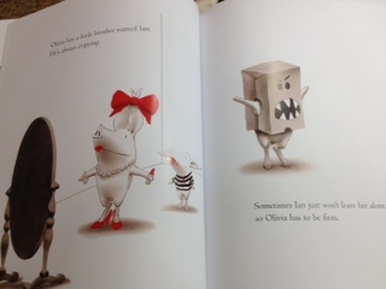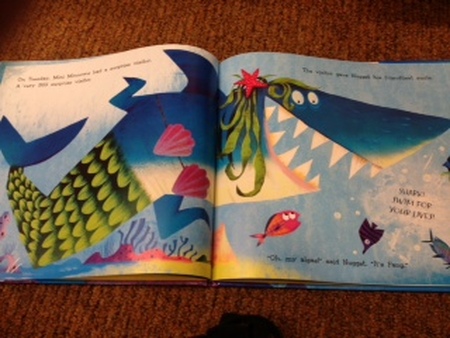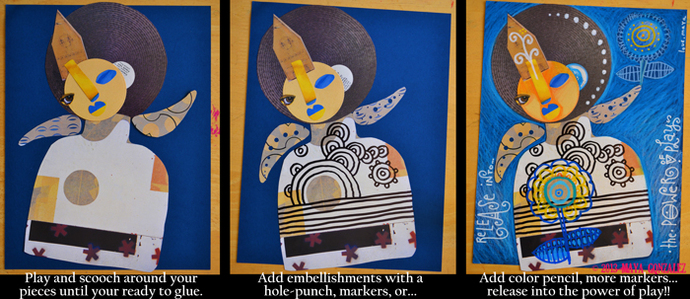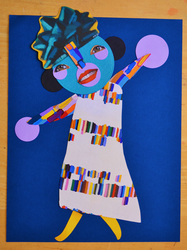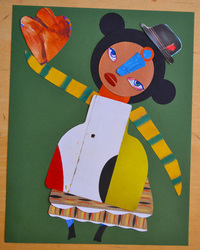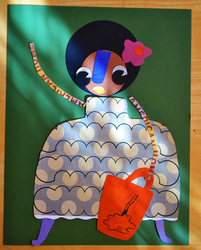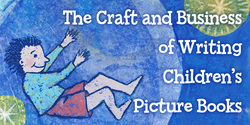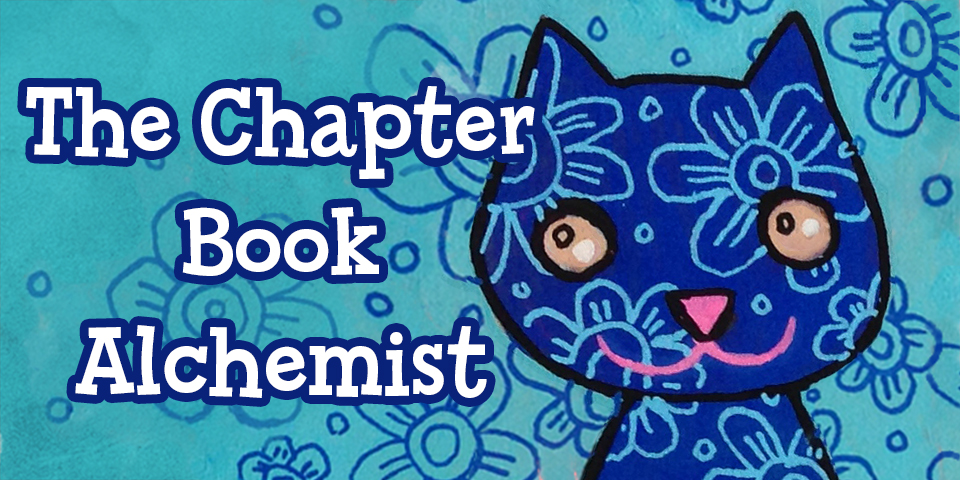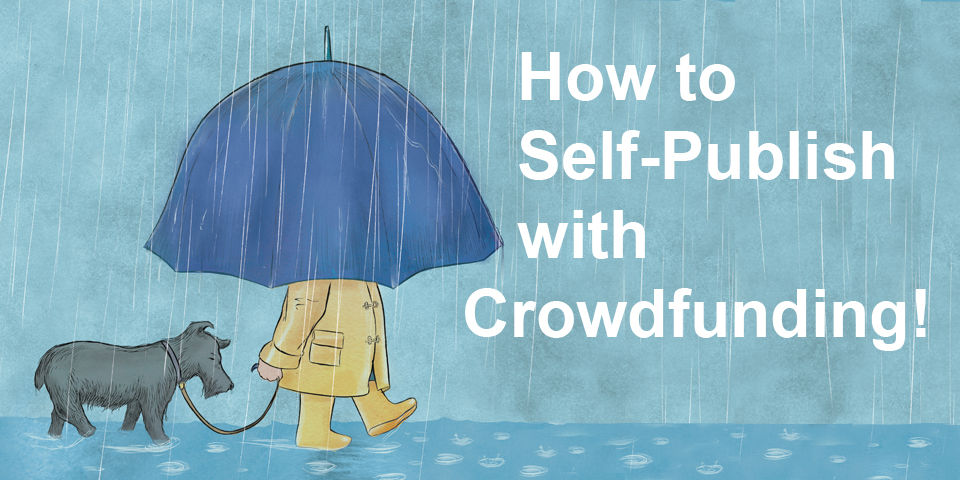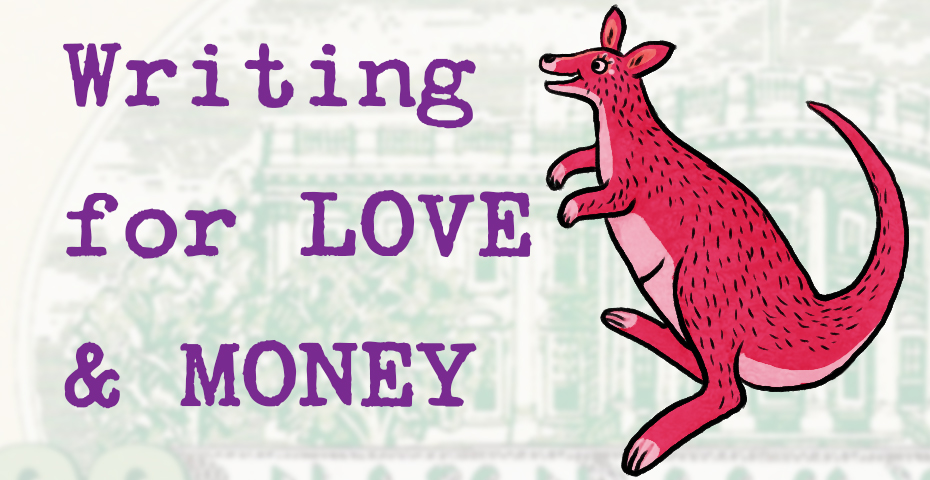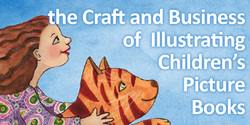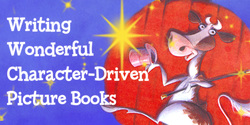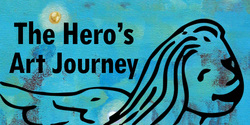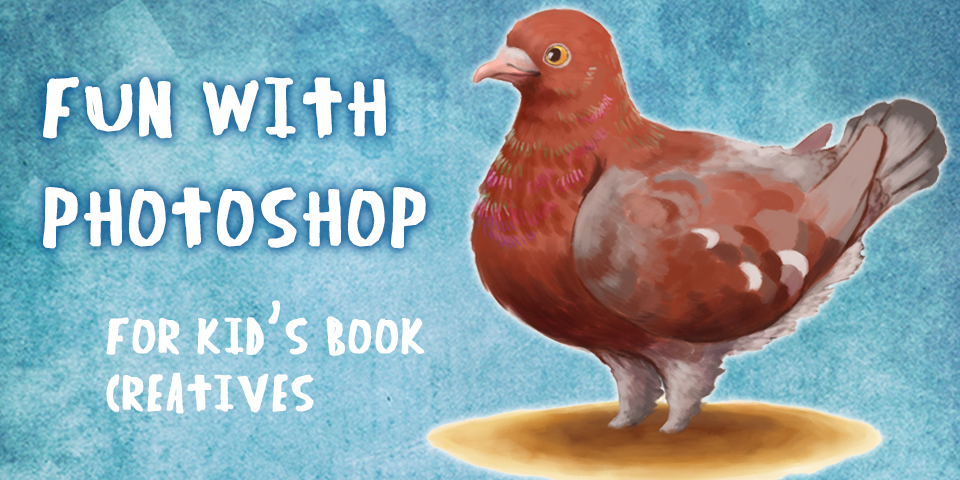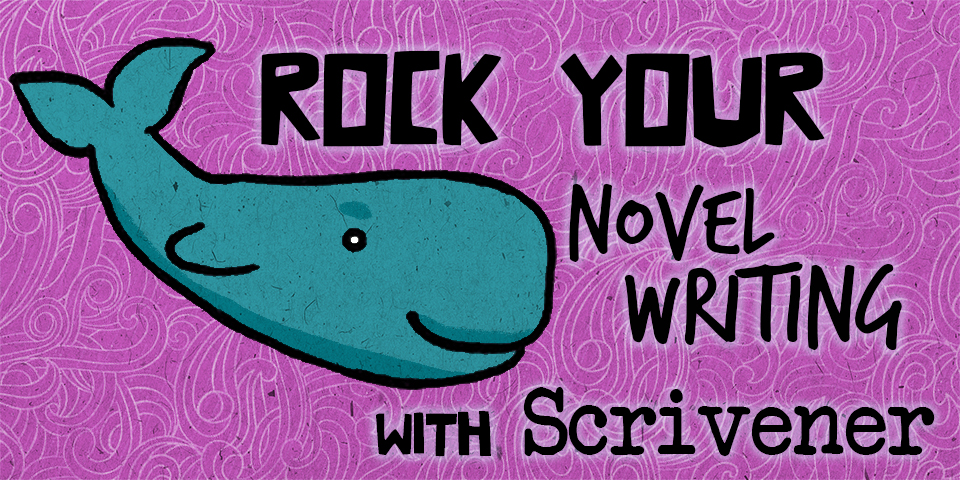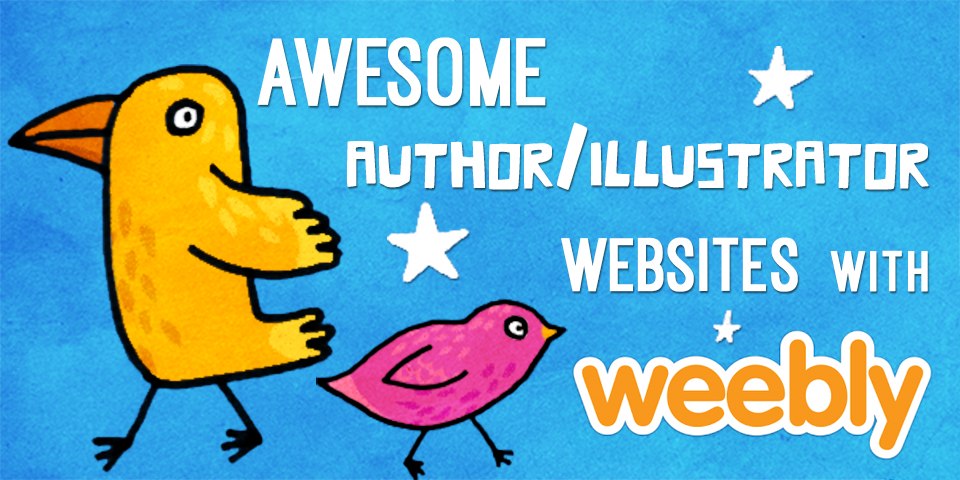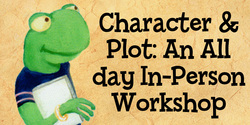|
I love funny picture books. I even write funny picture books. But study enough funny picture books and you will have the same discovery I did: often the words play “straight man” to the illustrations. At first this frustrated me. I mean, I love telling a good joke. I want to be funny. I want other people to think I am funny. But the truth is, in order to be a funny picture book writer, I have to be aware of how a picture book works. The words in a picture book MUST leave room for the pictures.In all actuality, the illustrator tells 50% or more of the story. In this way, picture books build visual literacy, as well as verbal. And remember, the picture book is meant to be read aloud to a child, therefore the child looks at the illustrations while the words are being read to them. By giving the illustrator room to be as layered and juicy as possible,children are allowed to be active “readers”. Let’s take a look at Olivia by Ian Falconer. 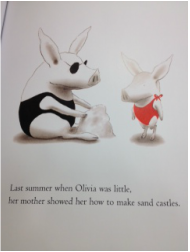 Falconer could have written, "Olivia's little brother Ian copies everything she does, even when she plays dress-up with Mom's makeup. Sometimes Ian won't leave Olivia alone so she dresses up like a monster to scare him." Wouldn't be the same, though, right? The marriage between what the words are saying and what is enhanced by the illustrations is what makes a successful picture book. The child looking at the illustrations is "in on the joke". Let's look at another illustration from Olivia. "Last summer when Olivia was little, her mother showed her how to make sand castles." Then after a brilliant page turn, we have this illustration. 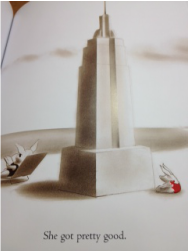 "She got pretty good." Hilarious, right? Think of a kid's reaction once that page is turned. An illustrator puts the discovery in the hands of the child. The picture speaks, the adult doesn't have to "give" the joke to the child. Picture books are empowering for the child. Falconer could have written, "She got so good she even made the Empire State Building." And yes, then there could be the same illustration. But the simple text with the illustrative layer is what makes this genius. Now, Ian Falconer is the author AND illustrator of Olivia, which sometimes leaves us AUTHOR ONLY picture book people wondering how we communicate the "funny" to an illustrator without dictating it. 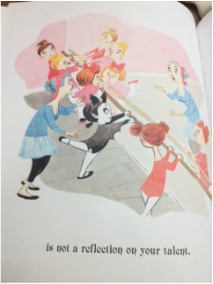 Let's take a look at Vampirina Ballerina written by Anne Marie Pace with illustrations by LeUyen Pham. This book is filled with a wonderful juxtaposition between words and illustrations. Pace's text is very basic, giving a "how to" type lesson on becoming a ballerina. However, Pham is able to use the double-meanings of the text to bring a level of vampire humor to the story. Here we have little Vampirina at the barre with the text, "is not a reflection on your talent." And of course, Pham picked up on the fact that vampires do not have a reflection and capitalizes on this fact in a comical illustration. Here picture books teach children to look for layers of meaning in words. They can also introduce young readers to irony--a sophisticated level of humor. Allow your illustrator the same amount of fun you had when writing your story. Above is an example from Nugget & Fang written by Tammi Sauer and illustrated by Michael Slack. "On Tuesday, Mini MInnows had a surprise visitor. A very BIG surprise visitor. The visitor gave Nugget his friendliest smile." Notice how Sauer let's her illustrator know that Fang is in disguse here, but does not state what kind of disguise, which gives Slack the freedom to bring out his own brand of humor. Hence, we have a shark in drag. I mean, who DOESN'T think a shark in drag is hilarious?! 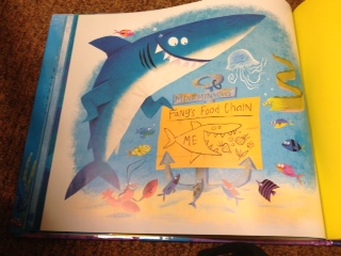 Slack continues the fun with a "button" (final page at the conclusion of the story) in which we see Fang explaining his new diet to the other fish. I would tend to believe this is all Slack and not something that Sauer had in her manuscript. But in allowing room for Slack to co-own the story, his brilliance shines through as much as her's. So, as frustrating as it might seem to leave so much room to the illustrator, it truly benefits the story...and the experience for the child. For that very reason, I will gladly take the "straight man" role once in awhile. In previous chapters Marcie Colleen has been a teacher and theatre educator, but now she splits her days between chasing the Picture Book Writer dream and chasing toddlers on the playground as a nanny. Both are equally glamorous! Her blog, The Write Routine and her Teacher’s Guides, can be found at www.thisismarciecolleen.com. You can also follow her on Twitter. Additionally, Marcie is the Education Consultant for Picture Book Month. She contributes the 4th Friday of the month, as a Blogette, right here, posting on humor in picture books. She lives with her fiancé and their mischievous sock monkey in Brooklyn, NYC.
9 Comments
As we enter the hurrying, scurrying time of year known as “the holidays,” I thought it timely to write about the much-neglected virtue of presence. The art of being present - in the present – can seem unattainable in this Internet age. We check our email while chatting with our daughter. We text while having breakfast with our husband. We watch the big screen in the restaurant while lunching with a friend. We are seldom totally present. The distractions available to us today follow us into our homes, into our lives, and into our souls. Distractions and being present do not mesh. Part of our dance with distraction is that we are constantly pressured to put ourselves “out there.” We must blog, we must market, we must chat on Facebook, pin captivating photos on Pinterest, and post witty tweets in 140 characters or less. But as writers, as creators, much of our best work is not done “out there.” It’s done “in here.” When Mrs. Griffin called roll in my two-room elementary school, we children answered, “Present!” It meant, or should have meant, that we were there, in the moment, totally and completely ready to learn, ready to listen, ready to be with our classmates. Amidst the noise of the world, consider the gift of finding yourself. Move to a window or go outside or just sit down in the hallway before you begin to write. Breathe. Enter into yourself. Be present. Just for a moment. After you are present with yourself, be present with your writing and with your characters. It’s not efficient to write a paragraph, then Google for five minutes. It’s not reasonable to write a page, then check your email. When you next sit down to write, say aloud, “Present!” just as my classmates and I did for Mrs. Griffin. Be there, totally and completely ready to write, ready to listen, ready to be with your characters...and yourself...without distractions. Your writing will be from a you who is present. Amazingly, when you are present you are also more productive and that productivity is of more value. Your words will ring original and your characters ring true. 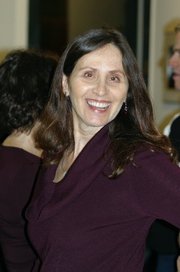 Called a “born storyteller” by the media, Marsha Diane Arnold wrote the award-winning “homegrown treasures” column prior to penning eleven award-winning picture books. Marsha recently contracted with Neal Porter Books for two new picture books and Kate O'Sullivan of Houghton Mifflin for another, coming out in 2016. She grew up on a Kansas farm, but today creates imaginative worlds and wacky characters in northern California surrounded by her garden, deer, hummingbirds, turkeys, oaks, and redwoods. Marsha's course Writing Wonderful Character-Driven Picture Books has helped many published and aspiring writers to write stronger characters. You may read about her books, school and Skype visits, and life at www.marshadianearnold.com. 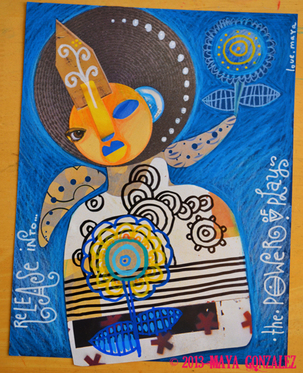 Release into the Power of Play... Last month I encouraged you to:
Ok, so this month, we’re returning to the glory of cutting and pasting. I forever find myself returning to this brilliant game. And once I begin it’s so hard for me to stop. Just playing for a long moment for this demo had me all charged up and dying to investigate further. Paper and pencils, glue and scissors-freedom at my fingertips! Something happens when we play. Just like when we were children, when we play, we learn. Returning to the tools of childhood provide us with a familiar door back to the creative wisdom we were born with. 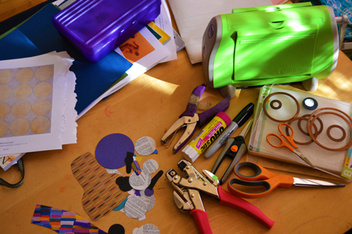 Gather Your Materials Gather Your Materials This project is a great way to begin playing with the empty page. Cut out a bunch of elements and then play puzzle with them. See how things look this way and that. Experiment with layering a figure into place. You don’t have to have the whole body figured out. You could have legs and arms, and a head and a body and move them around or cut more pieces until everything feels just right to you. Create characters, explore background, experiment with style, show movement. The sky’s the limit! You can see, I like big hair and big dresses! I have since I was a wee nibble. So you too get to do whatever YOU LIKE! Maybe it’s the thing you always drew when you were a kid, like mine is. 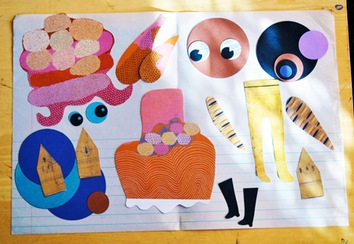 Cut out shapes and patterns from anything that strikes you Cut out shapes and patterns from anything that strikes you I got a little fancy with the cutting part. I whipped out my trusty die cut contraption. I have a Cuttlebug, which I love (It's that green thing in the picture above). I love the circle dies. I have hearts and scalloped ovals, but there’s something about the circles. They’re so round :-). Only recently have I found out about the tools that exist because of the new craft genre of “scrapbooking.” I love discovering this whole new world where “scrapbook” is turned into a verb and through the transformation is elevated to crazy heights of fabulousness. A far cry from my old photos in cellophane pages in a cardboard binder. I warmed up for this project by cutting circles in colored paper. This got my imagination stirring. I had an old art journal and the ever collage-ready National Geographic, which I barely used. I went through each page, ripping out whatever caught my eye. The art journal turned out to be the best because it had all this patterned stuff, (which reminded me of the great paper you can get for scrapbooking.) I cut arm-ish looking limbs and boots and dresses and a wig or two. I cut more than I needed. I cut until I felt done cutting. I laid all the elements out on a piece of paper and scooched them around until something fell into place. Sometimes I had to cut something else out. Then I glued everything down. I used color pencils, a permanent black marker and a white acrylic pen over everything and I decorated the sleeves by putting holes in them with my multiple size hole punchers! On the one I above that I fully finished, the face is construction paper and the ear is cut from the page of a dictionary. I had so much fun. I loosened up and relaxed. I played. It was awesome. In fact I had so much fun, I’m thinking I want to illustrate a book using this style now. My mind is exploding with ideas. Join me? Got paper, glue and scissors? Then freedom is yours! You are an artist. I know. P.S. Did you gather images last month? Did you scribble? Both of those things will come in handy with this project!!! And let me know how it goes! Here's some more samples from my playing...(click images to enlarge) Maya Gonzalez is largely self-taught. She has illustrated over 20 award-winning multicultural children’s books and written 3 with, not an end in sight! Her latest book, Call Me Tree, set to come out next year with Lee&Low Books, is her most recent labor of love! Her fine art has shown internationally and appears in numerous books about the contemporary Chicano Art Movement including on the cover of Living Chicana Theory and Contemporary Chicana and Chicano Art: Artists, Works, Culture and Education considered to be "the Bible of Chicano/a art." Ridiculously creative, she’s probably making art as you read this or thinking about making art if she’s driving a car or using the stove. And one of her ultimate passions is inspiring others to create books, because she believes that creating children's books has the potential to be one of the most radical things you can do! |
Meet the Friday Blogonauts
First Fridays will feature Bryan Patrick Avery, published writer , man of mystery, and professional magician among other things.
Second Fridays will feature awesome multi-award winning author Marsha Diane Arnold who will be writing about character-driven and/or nature-based books and/or anything she likes :) Third Fridays will feature independent Aladdin/Simon & Shuster editor Emma Sector who has helped bring many books into the world. Fourth Fridays will feature the great Christine Taylor-Butler who has published over 70 award-winning fiction and non-fiction and nonfiction books including the acclaimed new middle grade series - The Lost Tribes. Fifth Fridays will feature the fabulous Carl Angel award-winning multi-published Illustrator and graphic designer. Join our Tribe
and receive 7 Steps to Creative Happiness, access to free webinars, and lots more!
Your email addresses are always safe and respected with us. Follow our Blog!
Archives
January 2019
Categories
All
|
|
Discover
|
About Us
|
Join Us
Join our Community and receive a fabulous free gift, KidLit tips, newsletters, scholarship info, contests, and more!
Join our KidLit Mentorship |
Social Media
Interact with our FaceBook Group or follow us on:
|
© 2010-2024 All content on this website is copyrighted. Sorry, all courses are non-refundable.
